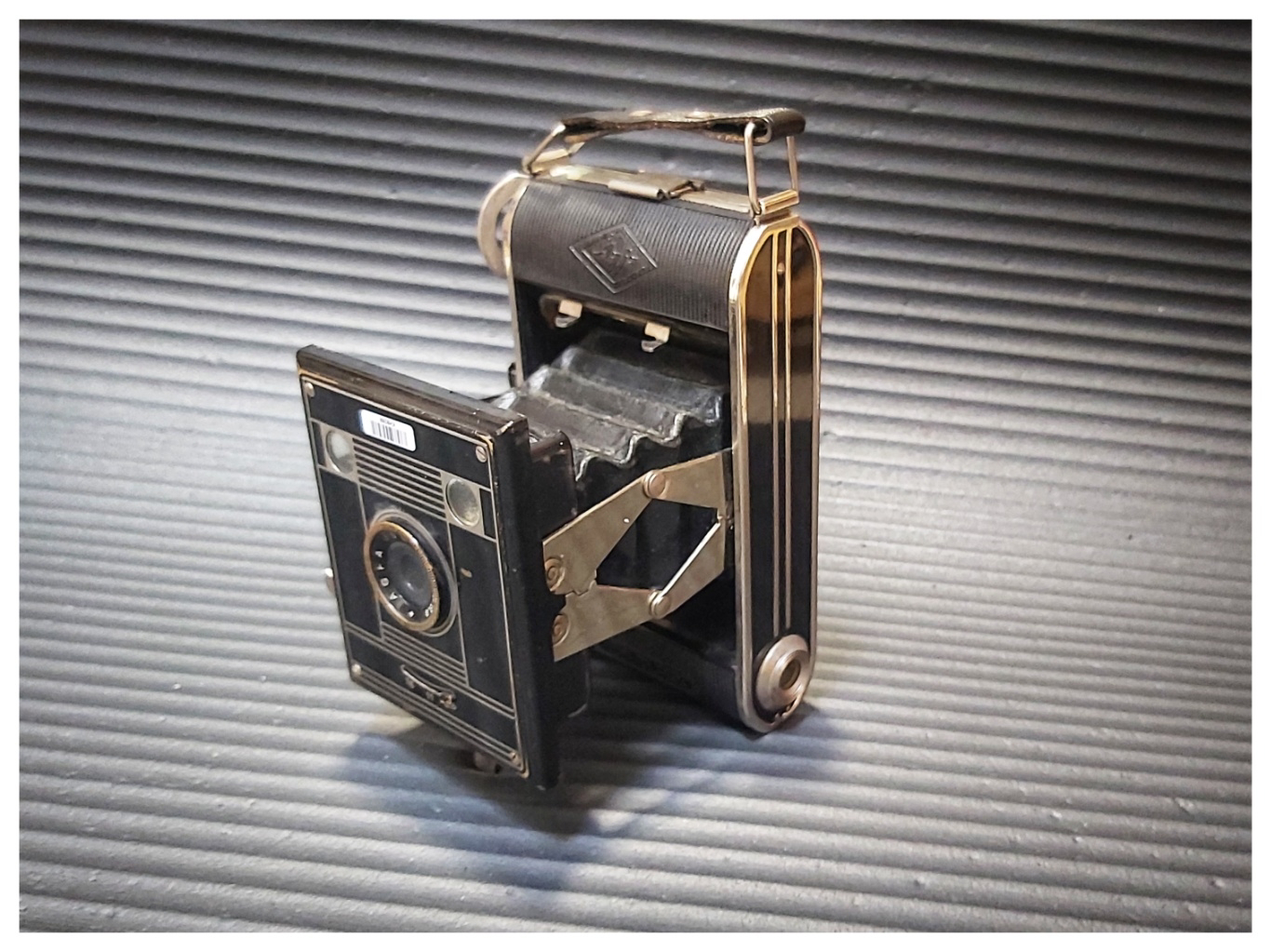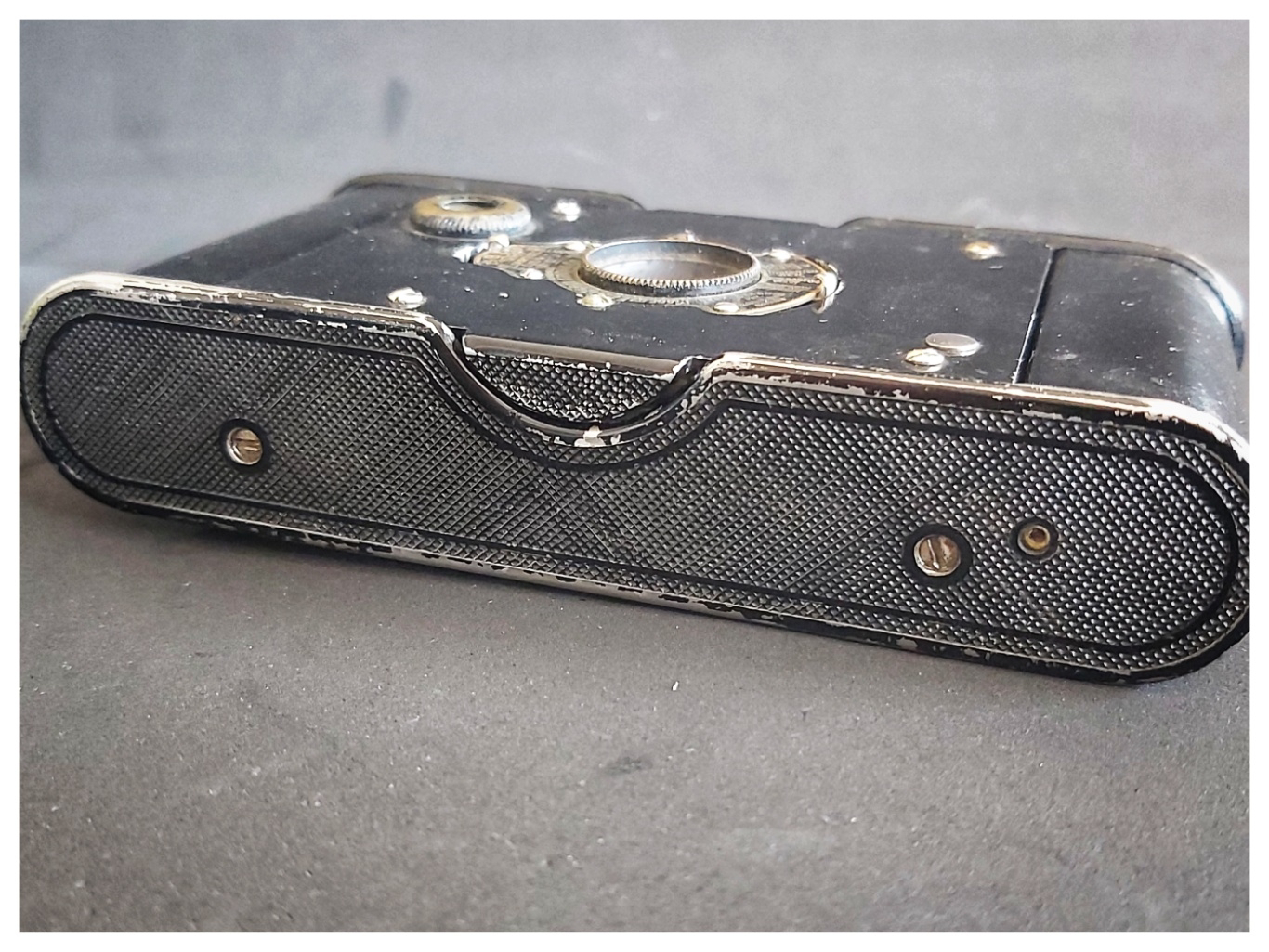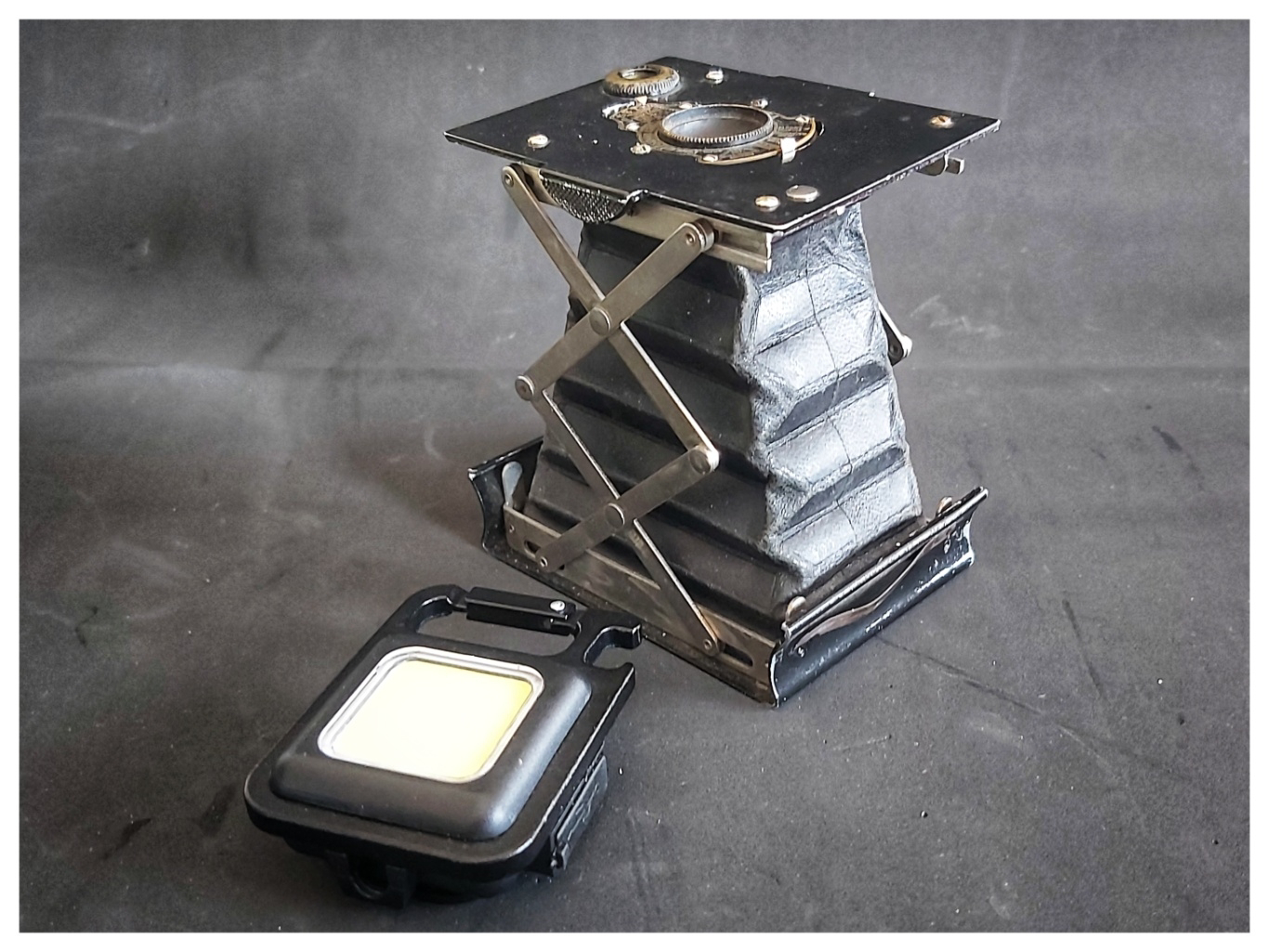Filling in the Gaps: The Vest Pocket Kodak Autographic camera
Filling in the Gaps: The Vest Pocket Kodak Autographic camera,
A few weeks ago I took delivery of the Polaroid Big Shot, an iconic instant camera from the 1970s, and I posted on social media that it was 'probably the last camera I would ever buy'. Well of course it wasn't and since then I've added several more cameras to my collection. However, this time I'm picking cameras specifically to 'plug the gaps' in my little collection of photographic history, cameras that I've wanted for a long time like this Vest Pocket Kodak.
I first became aware of the Vest Pocket Kodak (VPK) a couple of years ago when I was first looking at a YouTube video about the Kodak 1A Autographic Jr folding camera and a suggested video came up about the VPK. I was captivated by the idea of the strut-folding camera but put off by the fact that it used 127 film. Later I found on the Kamerastore website an Agfa Billy-Clack strut-folding camera, that I snapped up, but it wasn't the VPK.
Recently, though, I've been drawn to foldering cameras from the 1920s or earlier. It all started with the 1920s generic folding camera that I picked up for the Frugal Film Project and use with Instax Wide film. Then I came across a Kodak 1A Autographic Jr folding camera for 116 sized film that I am slowly getting back to full use again. I soon added another Kodak 1A Autographic camera, then an Ensignette folding camera from about 1910 and a KW Patent Etui 9x12 folding camera. But I was most happy to come across this lovely Vest Pocket Kodak Autographic camera on the Kamerastore website.
It was, of course, in the Kamerastore 'Not Passed' category, which meant that it was 'Untested or tested, inspected, and found to have flaws that will affect typical use.' These cameras are 'Recommended for decoration, projects, or use with special considerations', but now I am more confident with taking cameras apart to clean them and at €20,00 it was too good to pass up.
According to the description on the Kamerastore website it was 'not possible to test the shutter speeds for accuracy, and the T and B modes will not stay open, but it is in good cosmetic shape, and it comes with the autograph pen.' Well that was enough for me, I have addressed repairs in several cameras, including cleaning cameras lenses and making minor repairs to shutter mechanisms. Besides, it is unlikely that I will ever need to use the B and T modes.
When it arrived the camera was in nice condition. Yes, the body was a little bashed up, but it opened nicely and the bellows looked sound (see later). It also came with the most beautiful leather case, which I had not expected but which is in lovely condition. I opened it up, and yes the only shutter speed that was working sounded like the 1/50s. That was good enough for me.
My first check was to try and date the VPK. The serial number on the back of the foldable stand is 457922, and according to the entry on Camera Wiki this dates the camera to about 1916. After lightly cleaning the body, and blowing dust off the bellows, I removed the bellows assembly from the body by unscrewing the two screws on the base of the camera. First of all though I took off the lid and removed the metal 127 spool inside. I then cleaned the body of the camera and the red window with the air blower and a microfibre cloth.
Using a lens spanner I gently removed the lens from the body. This was really stiff and difficult to unscrew, so once it was removed I cleaned the threads in the lens assembly to remove any 100-year-old gunk that remained in the threads. I then cleaned the haze off the lens with a little methanol and a microfibre cloth.
Before I replaced the lens I thought that I should check the bellows for light leaks. I have a little light that I can put inside the bellows and look for pinholes, and at first it seemed that the bellows were light tight. But then I spotted a few tiny pinholes in one part of the bellows. To cover pinholes in bellows I use StarBrite liquid electrical tape, a thick rubberised paint that I can coat inside the lens to hide pinholes in bellows. I'm using this with the Kodak 1A Autographic Jr folding camera at the moment but it is a long, slow job to do properly.
After coating the bellows with a thin layer of the liquid electrical tape it needs to dry thoroughly before I try to close the bellows, otherwise I risk the possibility of tearing the bellows even further. So at the moment the camera is in pieces but drying out in the office before I embark on the next step, to respool some 35mm film onto a home-made 127 paper backing to test out this wonderful little camera.
If you are on Mastodon, you can now follow this blog directly. Just go to Mastodon and follow the 'Snapshot' WordPress account at @keithdevereux.wordpress.com@keithdevereux.wordpress.com. All new posts will be automatically updated to your timeline on Mastodon.
#Kodak, #Autographic, #VestPocket, #127Film, #Bellows, #Experimental, #Film, #ShittyCameraChallenge, #Retro, #Vintage, #ArtDeco,

























Comments
Post a Comment